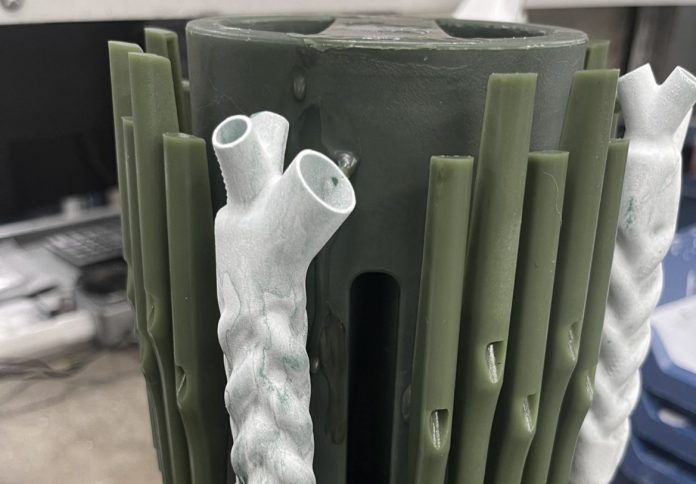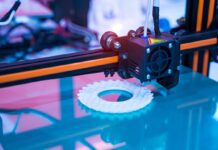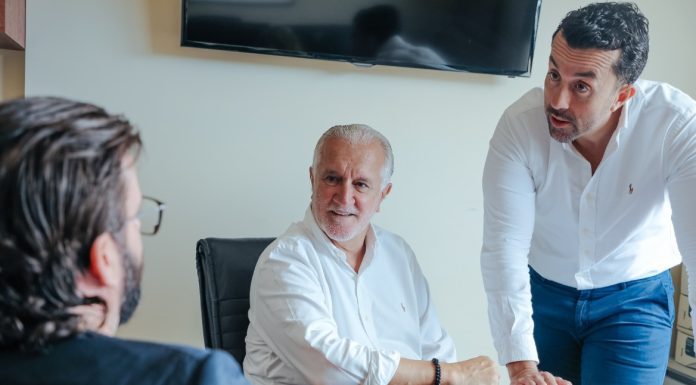
Article by Laurence Coles and Manolis Papastavrou, Founders, Metamorphic AM
When contemplating advanced manufacturing, disruptive technologies often find themselves miscast — positioned as replacements rather than reinforcements.
Additive Manufacturing (AM) is a case in point. While it has reshaped research and development and accelerated design thinking, its greatest impact is not in replacing traditional processes, but in transforming what those processes are capable of achieving.
This philosophy is at the heart of a collaboration between design consultancy Metamorphic AM and casting specialist Sylatech, whose work on a high-performance static mixer exemplifies the pragmatic potential of hybrid manufacturing. The project, which fused AM-driven computational design with production-grade investment casting, successfully scaled an intricately engineered part from tens to thousands per day — all without compromising performance, cost-efficiency, or sustainability.
More than just a clever solution, this collaboration presents a vision of production that treats AM not as an endpoint, but as a catalyst — an enabler that unlocks the full potential of conventional manufacturing techniques and helps them evolve into something far more powerful.
From design intent to castable geometry
The part at the centre of this story is a braided static mixer, developed to serve as a high-efficiency heat exchanger. Its role is to mix viscous, and often immiscible, fluids by creating continuous divisions and re-combinations within a tightly braided flow path. To achieve this, Metamorphic employed advanced computational design techniques, generating a geometry optimised for fluid mixing, but also significantly improved surface area for thermal transfer.
The geometry was born out of function. Every twist and turn was purpose-built to optimise heat exchange and reduce pressure drop. This wasn’t a case of styling complexity for complexity’s sake — it was complexity with purpose. Computational modelling allowed the team to explore multiple design variants at different operating conditions, all while ensuring manufacturing feasibility — not bolted on as an afterthought.
Initially designed for metal AM, the mixer could be produced via Direct Metal Laser Sintering (DMLS) at a respectable rate of approximately 50 units per day. With production volumes forecast to reach thousands per day, however, the limitations of AM as a primary manufacturing method became clear. At this time, Sylatech were searching for a part with complex geometries to put its MorphoCast process to the test, and the static mixer was seen as a good part for this and as a route to increased production volumes beyond what could be achieved via AM. Sylatech’s MorphoCast platform is a hybrid process that combines the design freedom of AM with the throughput and material efficiency of investment casting.
Making AM scalable through casting
The transition from digitally optimised design to castable production was seamless — and intentional. Sylatech’s plaster-based block investment casting process enabled the intricate braided structure to be faithfully reproduced in both aluminium A356 and aluminium-bronze AB1, with wall thicknesses as fine as 0.4 mm and the internal detail intact. No re-engineering was needed, and the production volume increased dramatically. Where AM topped out at around 50 parts per day, the casting process enabled the manufacture of up to 1800 units daily.
This hybridised manufacturing workflow made use of high-resolution pattern printing via Photocentric for small, precise parts, and Voxeljet for larger, net-shape patterns. Sylatech’s sophisticated casting methods employed vacuum-assisted fill systems, 60PPI ceramic filters to reduce turbulence, and vortex traps to capture oxide inclusions. The metal flow into the mould cavities was carefully controlled to maintain a constant 0.5 metres per second fill rate, preserving the integrity of the part while ensuring repeatable, defect-free production.
This was more than just a successful transition from prototype to production. It was a demonstration that additively derived design can be manufactured at scale using traditional processes, provided those processes are integrated early and intelligently.
Designing with manufacturability from the start
A key enabler of this success was Metamorphic’s approach to design, which integrates manufacturability into the process from the outset. The transition from AM to casting was simplified as the static mixer design was very organic, which is ideal for the casting process, and also the geometry was self-supporting, key manufacturability considerations considered at the inception of the project
Working in tandem with Sylatech’s simulation and process experts, Metamorphic validated casting viability through detailed metal flow and thermal modelling. These simulations informed both runner system design and cavity fill dynamics, ensuring that the delicate internal structures of the mixer would be faithfully reproduced. This iterative feedback loop between design and production safeguarded the project from the common pitfalls that plague many AM initiatives when transferred to volume manufacturing.
Computational design that empowers engineers
What sets Metamorphic apart is not just its ability to generate complex forms, but the intentionality behind the use of computational tools. Algorithms and simulation platforms are not used to replace human expertise but to support and accelerate it. Metamorphic uses tools like parametric modelling, FEA, and multi-objective optimisation to explore trade-offs and performance thresholds — always guided by real-world constraints.
In the heat exchanger project, this meant using algorithms to balance opposing requirements such as structural stiffness, pressure drop, and surface-area-to-volume ratios. The result was a part geometry that is not only efficient in theory but proven in practice — optimised for performance and robust enough for manufacturing.
Scaling complexity through hybrid thinking
This project stands as a proof point for what hybrid manufacturing can achieve. Rather than forcing AM into a volume scenario it wasn’t designed to handle or diluting design intent to fit legacy manufacturing, the Metamorphic–Sylatech partnership offers a third path — one where additive innovation and casting capability amplify each other.
The result is not just a high-performance, scalable component — it is a process architecture that can be applied to other complex, performance-critical parts across industries such as aerospace, automotive, chemical processing, and energy. It also introduces a viable route to sustainability — the heat exchanger is being developed with 85% post-consumer recycled aluminium, made possible by Sylatech’s ATI-funded MeltX metal purification technology.
Rather than viewing sustainability and performance as a trade-off, the team treated them as mutually achievable goals — another example of how functional intent can drive both innovation and responsibility in manufacturing.
A blueprint for the future of manufacturing
The story of the braided heat exchanger is a microcosm of a much larger shift. It signals a new way of thinking about manufacturing — one in which technologies are not competitive, but complementary. One in which digital design is not constrained by legacy tooling, and where production processes are shaped around performance requirements, not vice versa.
Importantly, hybrid manufacturing approaches (combining AM with established processes like casting) can also simplify qualification and compliance pathways. By leveraging known materials, mature processes, and industry-standard inspection regimes, parts that begin life as AM-oriented designs can often be qualified more easily when produced through familiar, certifiable manufacturing methods. This makes hybrid workflows not only practical but highly attractive for regulated industries like aerospace, automotive, and energy.
Metamorphic and Sylatech’s collaboration demonstrates that scalable AM innovation doesn’t require abandoning traditional methods — it requires enhancing them with the best tools available. This approach redefines not only how we make things, but how we think about making.
This is how you scale complexity. This is how you deliver performance without compromise. This is the kind of thinking that doesn’t just break the mould — it redefines what the mould is for.




















